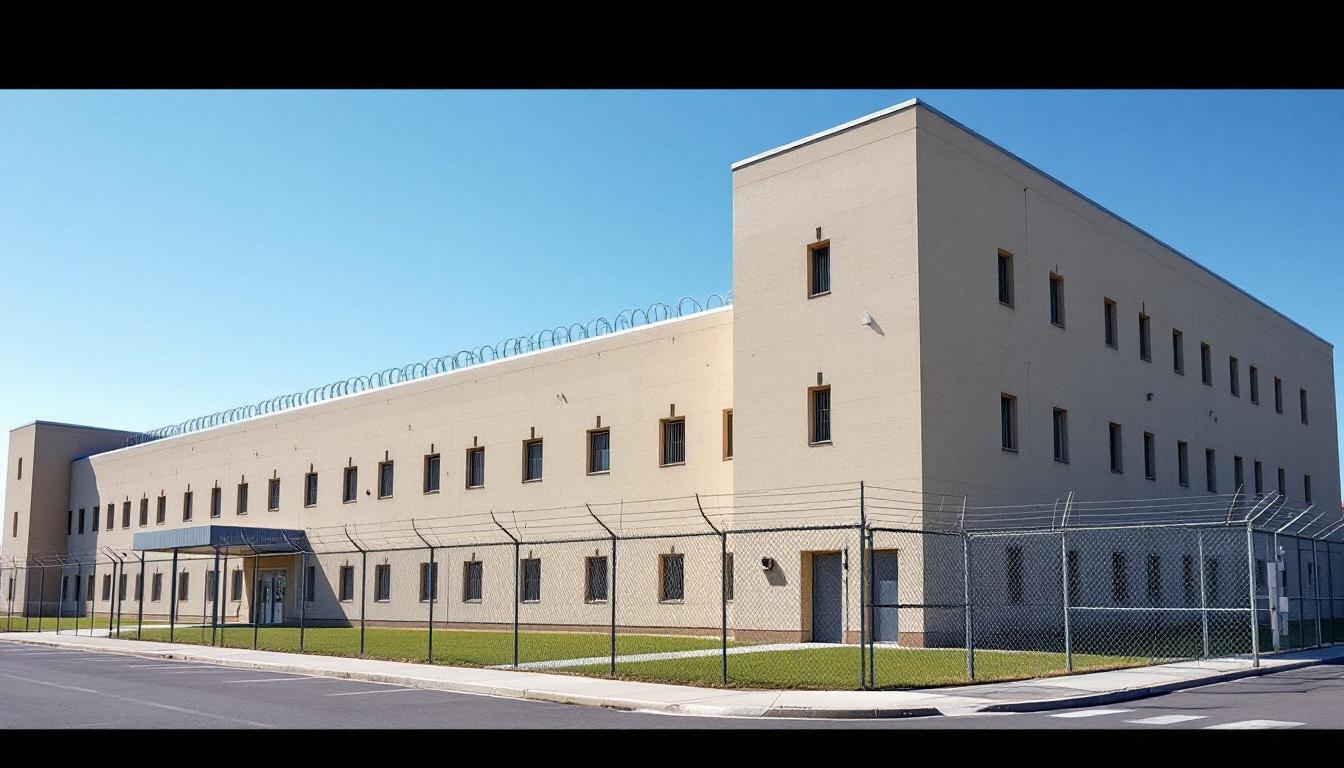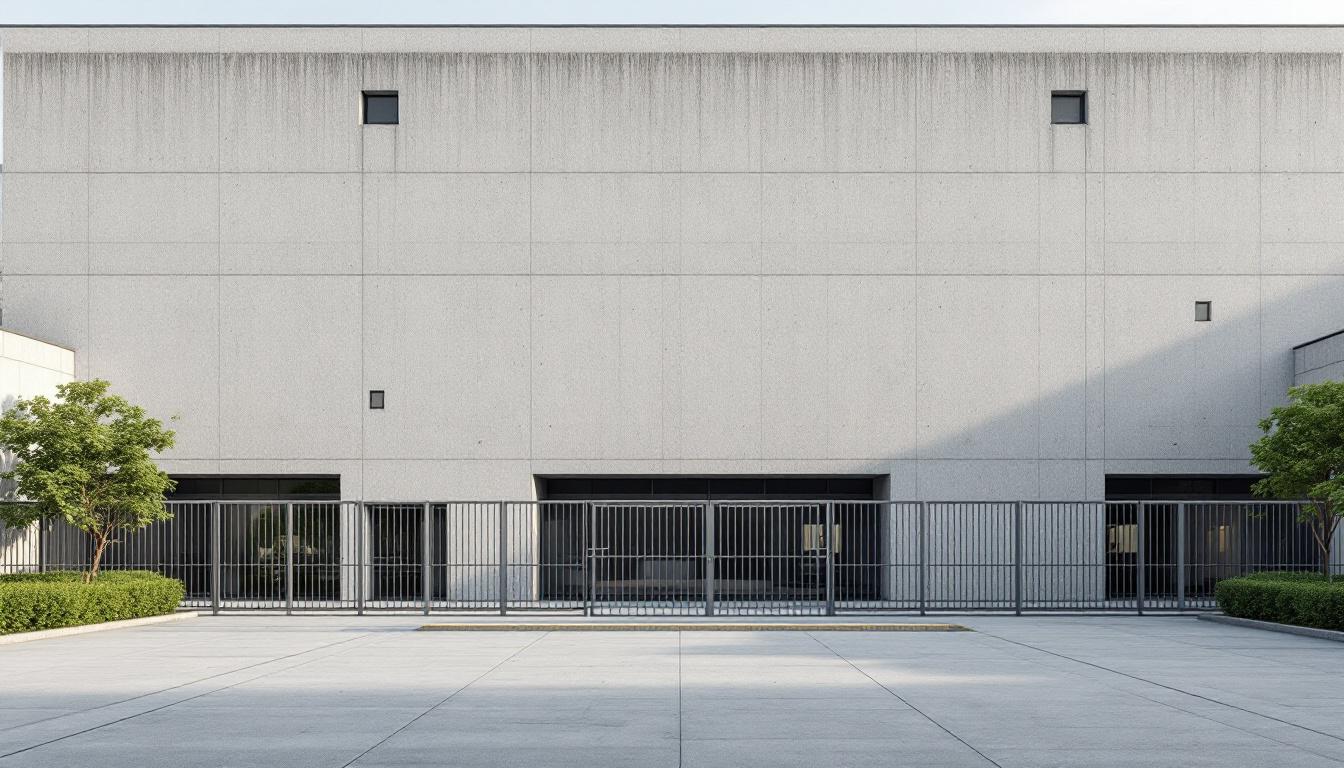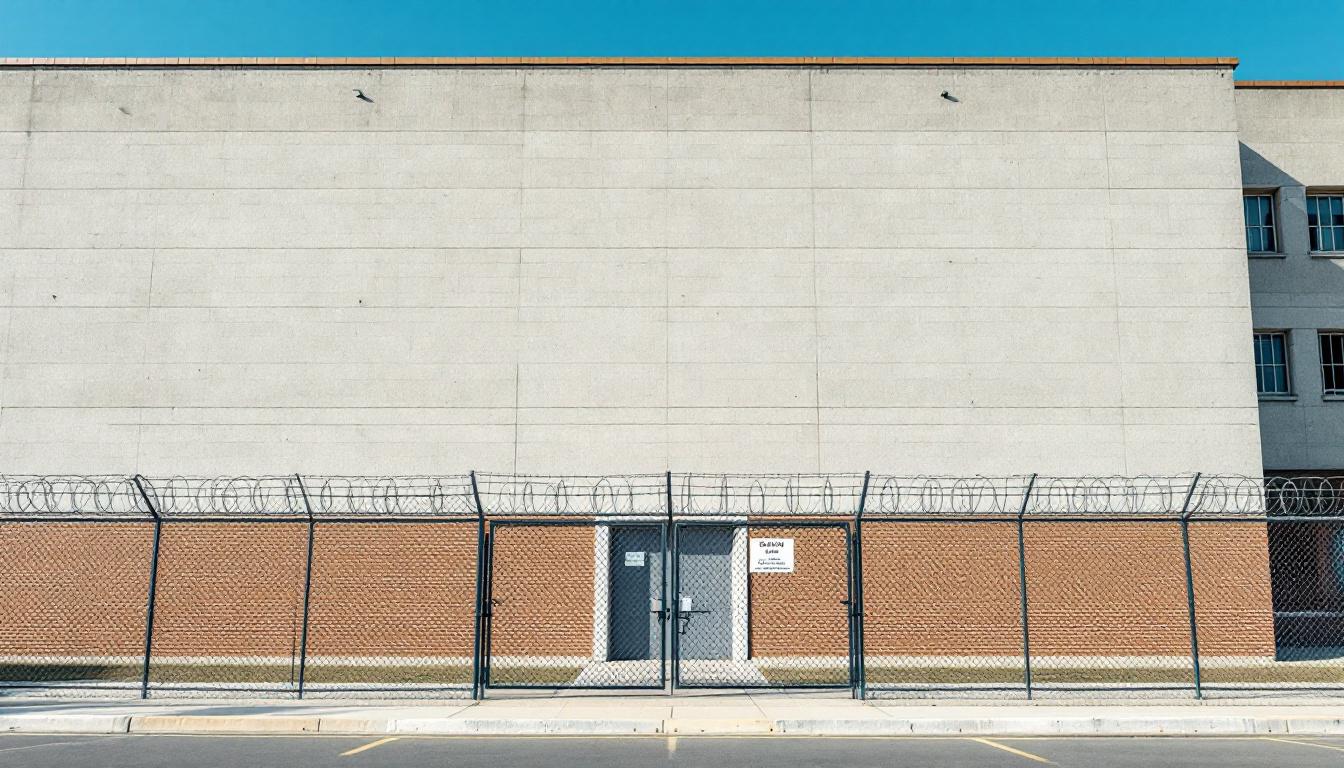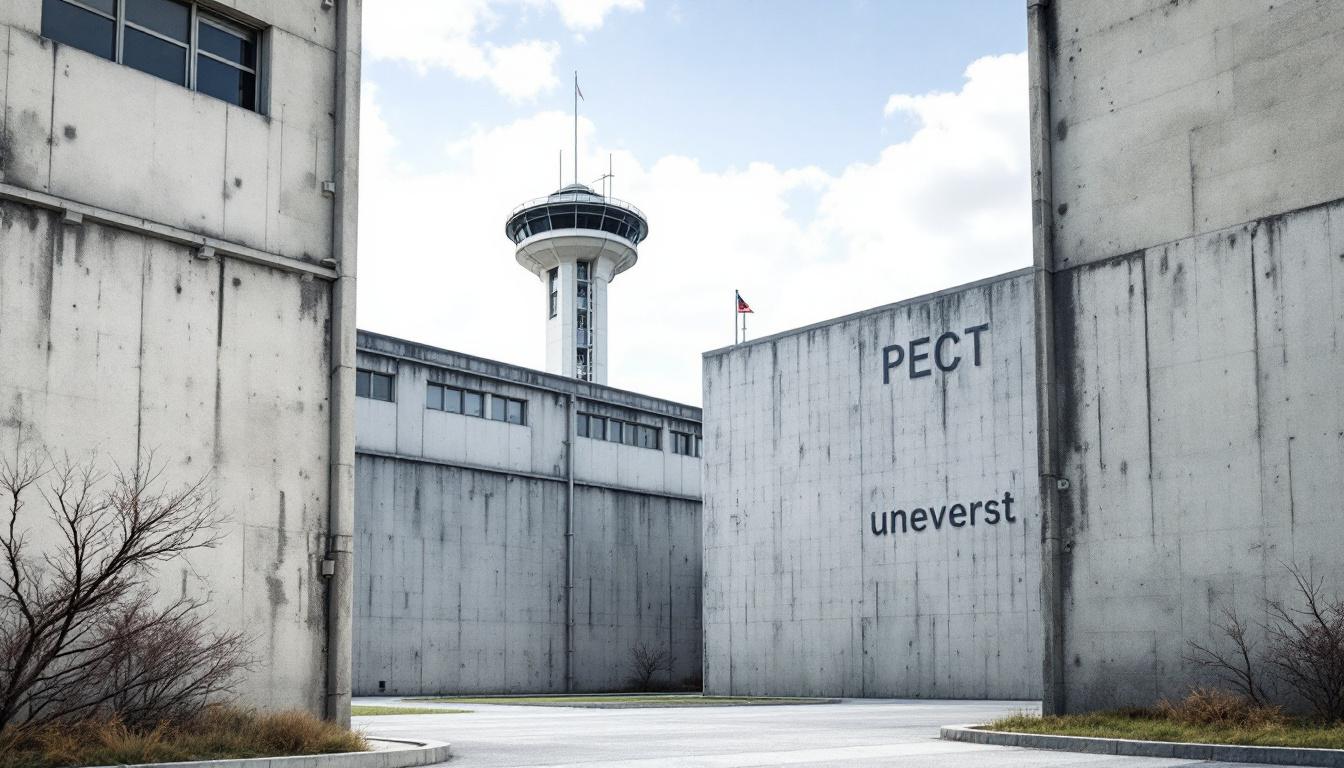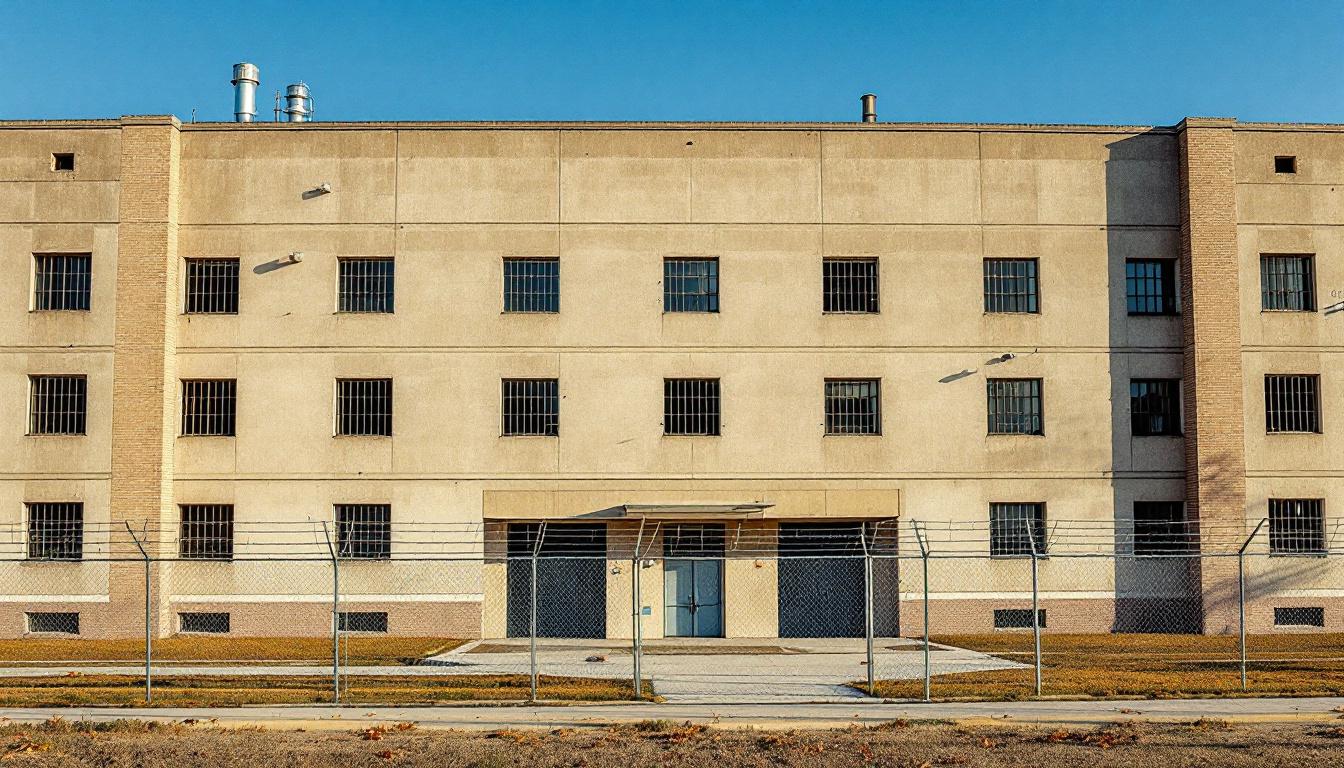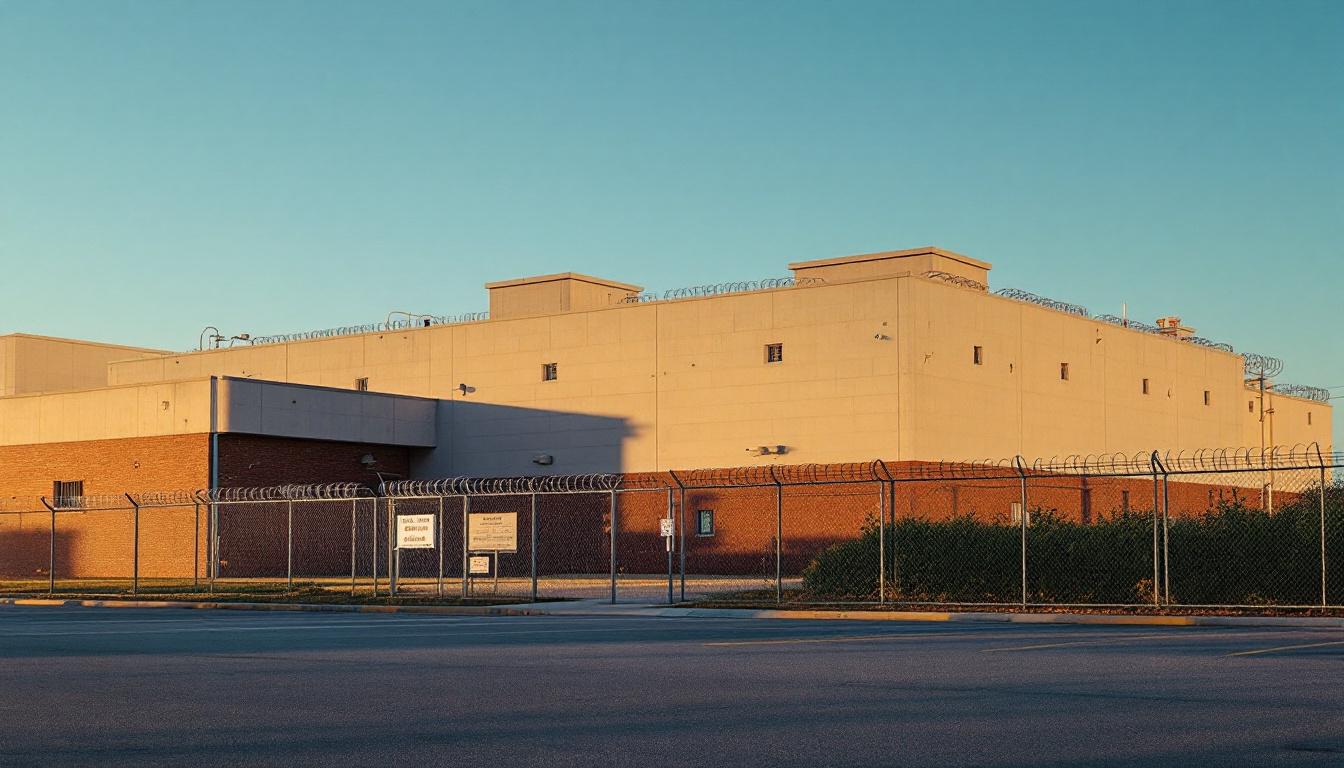
Quick Navigation
How to contact an inmate at Richard A. Handlon Correctional Facility
This comprehensive guide will walk you through how to connect with an inmate at Richard A. Handlon Correctional Facility. Follow the steps below to find an inmate and send letters and photos:
- Search for the inmate using our search tool below
- Create your account or log in to Penmate
- Write your message (up to 6,000 characters)
- Send instantly - inmates receive printed copies daily
Find an Inmate
Search for an inmate to start communicating today
Tip: You can search by first name, last name, or inmate ID number
To contact a person at Richard A. Handlon Correctional Facility start by searching for the person on the official facility website. Perform a search by following these steps:
- Step 1: Enter their first name and last name into the search form and click "Search"
- Step 2: Locate their inmate record
- Step 3: Write down their Inmate ID and any housing information provided
Important! Be sure to enter the person's full name. Nicknames should not be used.
How to Send Messages to Inmates

You can use your phone or computer to send emails, letters, and photos to an inmate. Messages are sent electronically to inmate tablets or kiosks at the facility. If you would like to send a message, start by searching for an inmate at Richard A. Handlon Correctional Facility.
Sending Photos and Postcards

A great way to send love and support to a loved one at Richard A. Handlon Correctional Facility is to send photos and postcards. It only takes a few minutes to send photos from your phone and it makes a huge difference. You can also mail postcards with words of support and inspiration, or design your own postcard for special moments like birthdays and holidays.
Important! Be sure not to send any explicit photos or they may not be approved by the facility. You can also use a photo printing app like Penmate to make sure your photos are printed at the correct size (4x6 or 3x5) and are mailed according to the rules and regulations of Richard A. Handlon Correctional Facility.
Frequently asked questions about Richard A. Handlon Correctional Facility
-
How long does it take to deliver a message?
If you're sending an email message your letter is usually delivered within 24-48 hours. For messages sent via mail you should expect delivery within 3-7 days. All messages will need be approved by Richard A. Handlon Correctional Facility.
-
How much does it cost to send a message to Richard A. Handlon Correctional Facility?
You can send a message free using your phone or mail a message via USPS for the price of a $0.60 stamp and envelope. You can also purchase credits or e-stamps from services starting at $1.99.
-
What services can I use to contact an inmate at Richard A. Handlon Correctional Facility?
Penmate
You can use Penmate to send letters and photos to an inmate from your phone. It's an easy way to stay in touch during your loved one's incarceration. Use the inmate locator to find an inmate's location and contact information, then you can send messages within a few minutes.
Securus messaging
Securus may be another option for communicating with an inmate at Richard A. Handlon Correctional Facility. You can create a friends and family account and purchase credits to send messages. All messages will be reviewed and must be approved by the facility.
JPay
Some county jails and state prisons may support sending messages with JPay. You must register an account with the system, find your loved one, and purchase stamps to send messages. For some locations you can also attach photos.
Smart Jail Mail
You may also check if Smart Jail Mail is available at Richard A. Handlon Correctional Facility. Smart Jail Mail is operated by Smart Communications and has contracted with some state and county jails. After purchasing credits, your messages and photos are sent to the facility, printed out, and then handed out to your loved one.
-
What is the mailing address of Richard A. Handlon Correctional Facility?
Mailing address:
Richard A. Handlon Correctional Facility
1728 Bluewater Hwy
Ionia, MI 48846
Phone: (616) 527-3100 -
What are the visiting hours at Richard A. Handlon Correctional Facility?
Visiting hours at Richard A. Handlon Correctional Facility vary by housing unit and security level. Generally, visits are scheduled on weekends and holidays, with some facilities offering weekday visits. Contact the facility directly at (616) 527-3100 or check their website for the current visiting schedule. Visits typically last 30-60 minutes and must be scheduled in advance.
-
What items are prohibited when sending mail to Richard A. Handlon Correctional Facility?
Prohibited items typically include: cash, personal checks, stamps, stickers, glitter, glue, tape, staples, paperclips, polaroid photos, musical or blank greeting cards, hardcover books, magazines with staples, and any items containing metal or electronics. Only send letters on plain white paper with blue or black ink. Photos must be printed on regular photo paper (no Polaroids). Always check with Richard A. Handlon Correctional Facility for their specific mail policies.
-
How do I send money to an inmate at Richard A. Handlon Correctional Facility?
You can send money to an inmate at Richard A. Handlon Correctional Facility through several methods: 1) Online using JPay, Access Corrections, or the facility's approved vendor, 2) Money orders mailed directly to the facility with the inmate's name and ID number, 3) Kiosks located in the facility lobby, or 4) Over the phone using a credit or debit card. Fees vary by method, typically ranging from $2.95 to $11.95 per transaction.
-
Can I schedule a video visit with an inmate at Richard A. Handlon Correctional Facility?
Many facilities now offer video visitation as an alternative to in-person visits. At Richard A. Handlon Correctional Facility, video visits may be available through services like Penmate, Securus Video Connect, GTL, or ICSolutions. Video visits typically cost $10-20 for 20-30 minutes and must be scheduled in advance. You'll need a computer or smartphone with a camera and reliable internet connection. Contact the facility for their specific video visitation policies and approved vendors.
-
What identification do I need to visit an inmate at Richard A. Handlon Correctional Facility?
All visitors must present valid government-issued photo identification such as a driver's license, state ID, passport, or military ID. Minors must be accompanied by a parent or legal guardian who can provide the minor's birth certificate. Some facilities require visitors to be on the inmate's approved visitation list, which may require a background check. Contact Richard A. Handlon Correctional Facility for specific ID requirements and visitor approval procedures.
-
How can I find out an inmate's release date?
To find an inmate's release date at Richard A. Handlon Correctional Facility, you can: 1) Use the online inmate search tool if available, 2) Call the facility's records department, 3) Contact the inmate's case manager or counselor, or 4) Have the inmate provide this information during a call or visit. For privacy reasons, some facilities only release this information to immediate family members.
Facility Overview
Contact Information
Richard A. Handlon Correctional Facility1728 Bluewater Hwy
Ionia, MI 48846
Phone: (616) 527-3100
Official Website
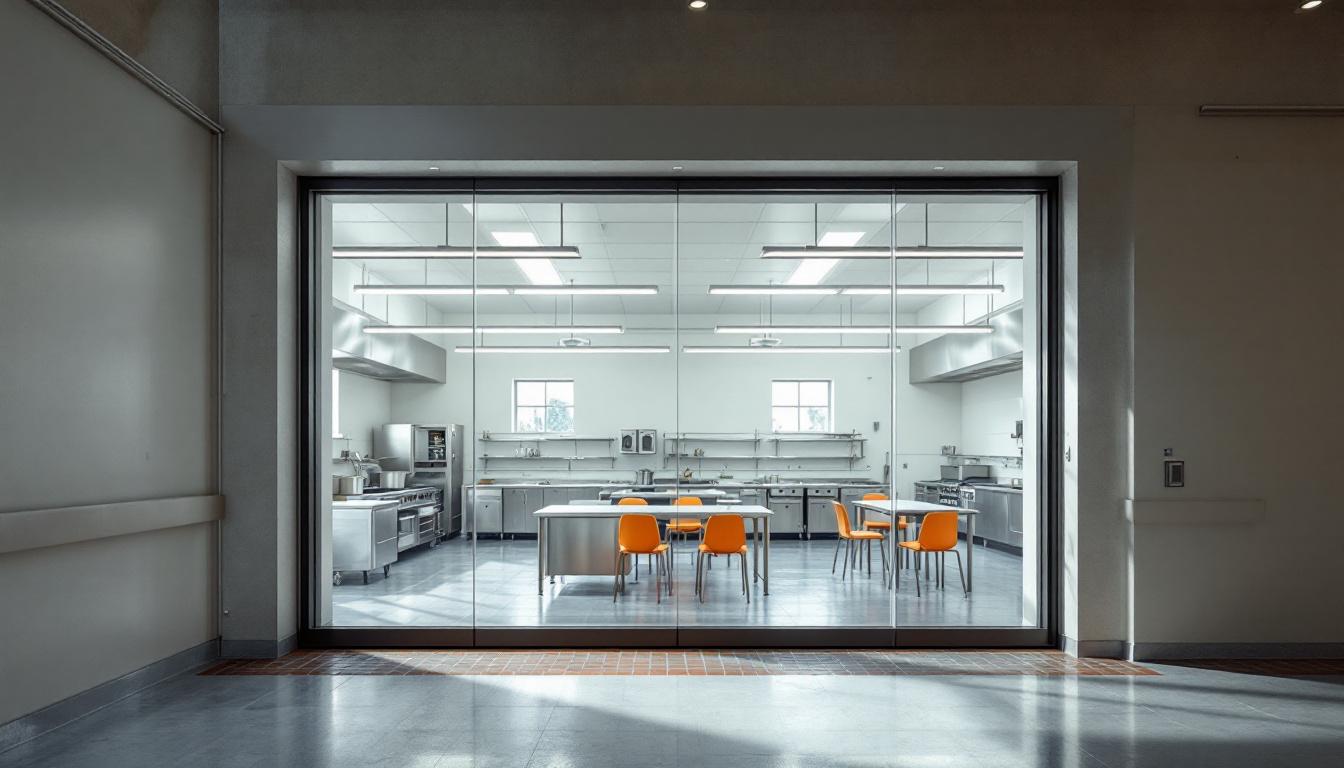
About Richard A. Handlon Correctional Facility
Deep within Michigan's heartland, Ionia serves as home to Handlon Correctional Facility, MI, where comprehensive offender management strategies focus on measurable outcomes and sustainable community reintegration. This MI correctional facility operates with a structured approach that emphasizes evidence-based practices designed to reduce recidivism while maintaining public safety. Through systematic assessment and individualized case planning, the facility typically works to address the underlying factors that contribute to criminal behavior, creating pathways for positive behavioral change among its resident population.
Educational programming and vocational skill development form cornerstone elements of the facility's rehabilitation framework, with residents services often including literacy improvement, GED completion opportunities, and workforce preparation initiatives. The correctional facility generally maintains partnerships with educational providers to deliver structured learning environments that prepare individuals for successful community reentry. Substance abuse treatment programs and mental health services may also be integrated into the overall treatment approach, recognizing that addressing these co-occurring issues often proves essential for long-term success.
Located in Ionia's rural setting, the facility benefits from Michigan's broader correctional philosophy that balances accountability with rehabilitation opportunities. Staff typically employ progressive programming models that encourage personal responsibility while providing the tools necessary for positive life changes. Through consistent evaluation of program effectiveness and outcome tracking, this approach to correctional management aims to create lasting impacts that extend beyond incarceration, ultimately contributing to safer communities throughout the midwest region.
Programs & Services
Educational initiatives at Handlon Correctional Facility typically encompass a comprehensive framework designed to address the multifaceted needs of residents through structured learning opportunities and skill development pathways. The facility's approach to rehabilitation emphasizes the transformative power of education and vocational training, recognizing that meaningful engagement in academic and practical learning experiences often serves as a cornerstone for successful reintegration into society. This philosophy permeates throughout various program offerings, creating an environment where residents may access diverse educational resources that build both foundational knowledge and specialized competencies essential for post-release success.
The educational and vocational components of these initiatives often include structured academic programs alongside specialized vocational education opportunities that prepare residents for employment upon release. Culinary arts training may deliver hands-on experience in food preparation, kitchen management, and food service operations, providing residents with marketable skills in the hospitality and restaurant industries. Additionally, broader vocational education initiatives typically encompass various trade-focused curricula that align with regional employment demands, enabling participants to develop technical proficiencies while earning recognized certifications that enhance their employability prospects.
Support services and therapeutic initiatives complement the educational framework through comprehensive programming designed to address behavioral, social, and practical reintegration challenges. The prisoner reentry initiative may offer structured guidance and resources to help residents navigate the transition from incarceration to community living, while healthy relationships programming typically focuses on developing interpersonal skills and emotional intelligence. Community service opportunities often provide residents with meaningful ways to contribute positively to society while building a sense of civic responsibility, creating pathways for personal growth that extend beyond traditional academic or vocational training and foster lasting behavioral change.
Daily Life & Visitation
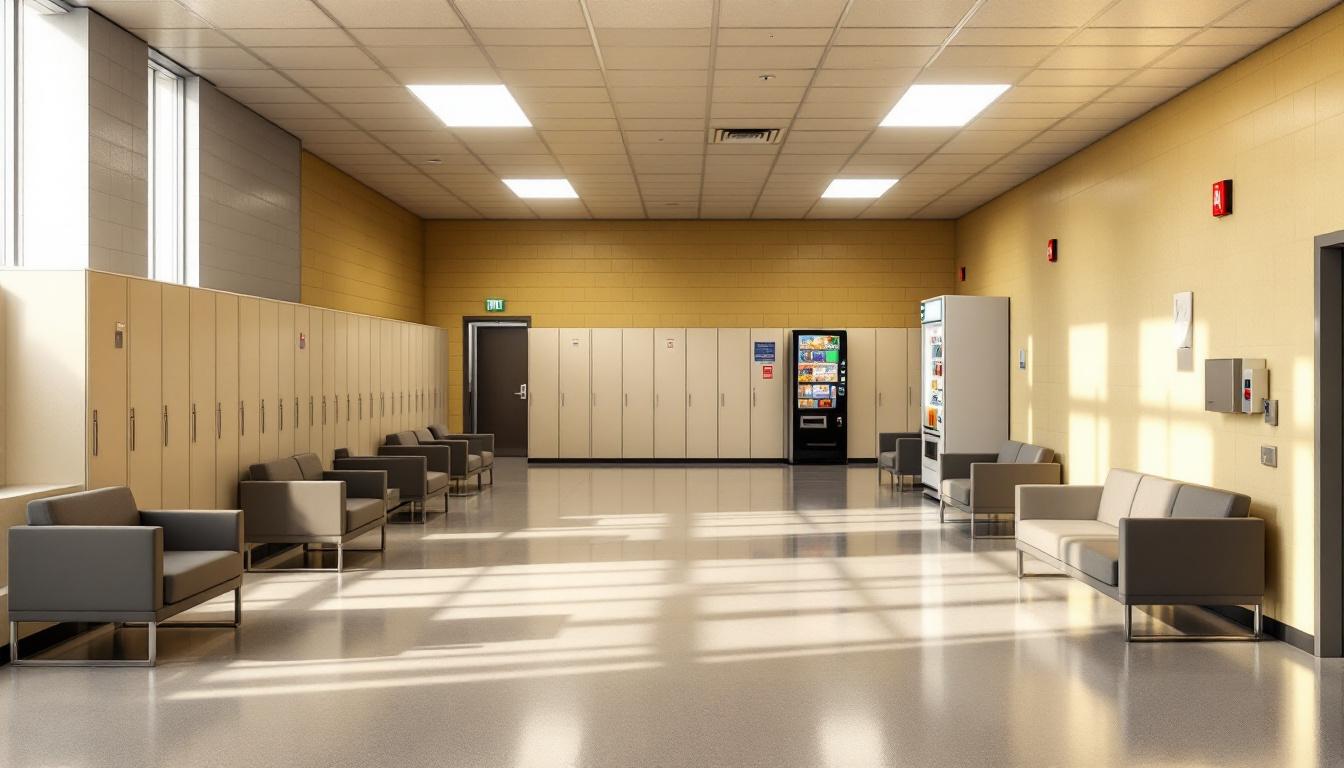
The rhythmic cadence of structured schedules delivers a foundation of predictability that shapes each day, with residents following consistently maintained routines that begin before dawn and extend through evening hours. Today's schedule typically mirrors yesterday's and tomorrow's, creating a framework where residents generally know what to expect from morning count through lights-out, fostering an environment where stability emerges from routine rather than uncertainty.
Living accommodations at the facility usually consist of shared housing units where residents maintain personal spaces within dormitory-style or cell-based arrangements, depending on their security classification and housing assignment. Residents typically store approved personal belongings in designated areas and may access commissary items to supplement basic necessities provided by the facility. Meals are generally served at scheduled times in common dining areas, with residents following established procedures for movement between housing units and dining facilities. Additionally, the structured meal schedule often serves as an anchor point around which other daily activities are organized.
Programming opportunities typically include educational classes, vocational training, and counseling sessions that deliver both structure and skill development throughout the week. Recreation and exercise periods usually provide residents with opportunities for physical activity and social interaction within supervised settings, while work assignments within the facility may include kitchen duties, maintenance tasks, or other institutional operations. While maintaining security protocols, the facility generally offers visitation opportunities and communication options such as phone calls and correspondence, allowing residents to maintain connections with family members and support systems that often prove essential for successful reintegration planning.
Ready to Connect?
Start communicating with your loved one today
Search for an Inmate



